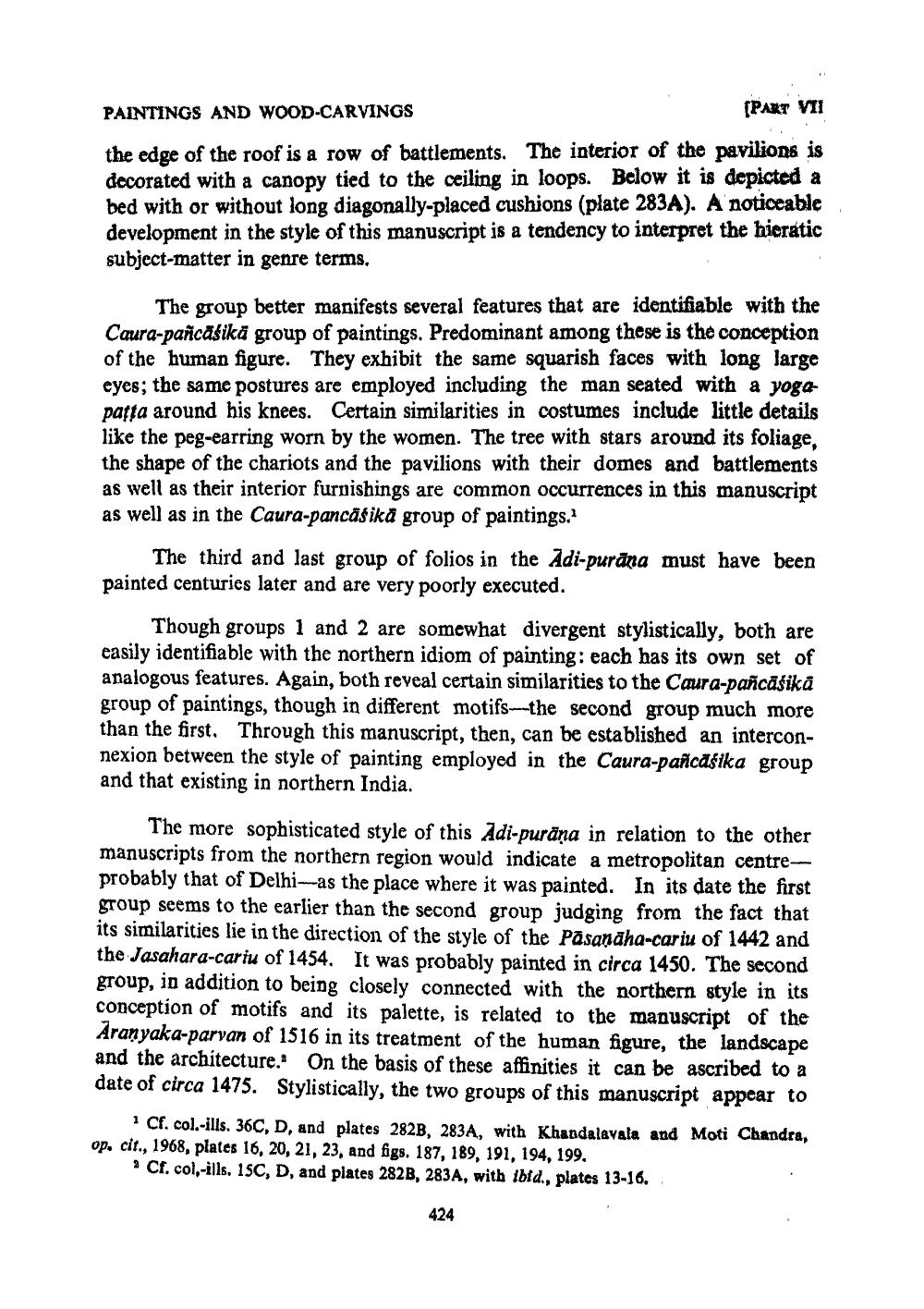________________
PAINTINGS AND WOOD-CARVINGS
[PART VII
the edge of the roof is a row of battlements. The interior of the pavilions is decorated with a canopy tied to the ceiling in loops. Below it is depicted a bed with or without long diagonally-placed cushions (plate 283A). A noticeable development in the style of this manuscript is a tendency to interpret the hieratic subject-matter in genre terms.
The group better manifests several features that are identifiable with the Caura-pañcasika group of paintings. Predominant among these is the conception of the human figure. They exhibit the same squarish faces with long large eyes; the same postures are employed including the man seated with a yogapatta around his knees. Certain similarities in costumes include little details like the peg-earring worn by the women. The tree with stars around its foliage, the shape of the chariots and the pavilions with their domes and battlements as well as their interior furnishings are common occurrences in this manuscript as well as in the Caura-pancasika group of paintings.'
The third and last group of folios in the Adi-purana must have been painted centuries later and are very poorly executed.
Though groups 1 and 2 are somewhat divergent stylistically, both are easily identifiable with the northern idiom of painting: each has its own set of analogous features. Again, both reveal certain similarities to the Caura-pañcātikā group of paintings, though in different motifs-the second group much more than the first. Through this manuscript, then, can be established an interconnexion between the style of painting employed in the Caura-pañcasika group and that existing in northern India.
The more sophisticated style of this Adi-purana in relation to the other manuscripts from the northern region would indicate a metropolitan centreprobably that of Delhi-as the place where it was painted. In its date the first group seems to the earlier than the second group judging from the fact that its similarities lie in the direction of the style of the Pasandha-cariu of 1442 and the Jasahara-cariu of 1454. It was probably painted in circa 1450. The second group, in addition to being closely connected with the northern style in its conception of motifs and its palette, is related to the manuscript of the Aranyaka-parvan of 1516 in its treatment of the human figure, the landscape and the architecture. On the basis of these affinities it can be ascribed to a date of circa 1475. Stylistically, the two groups of this manuscript appear to
1 Cf. col.-ills. 36C, D, and plates 282B, 283A, with Khandalavala and Moti Chandra, op. cit., 1968, plates 16, 20, 21, 23, and figs. 187, 189, 191, 194, 199.
Cf. col,-ills. 15C, D, and plates 282B, 283A, with ibid., plates 13-16.
424




